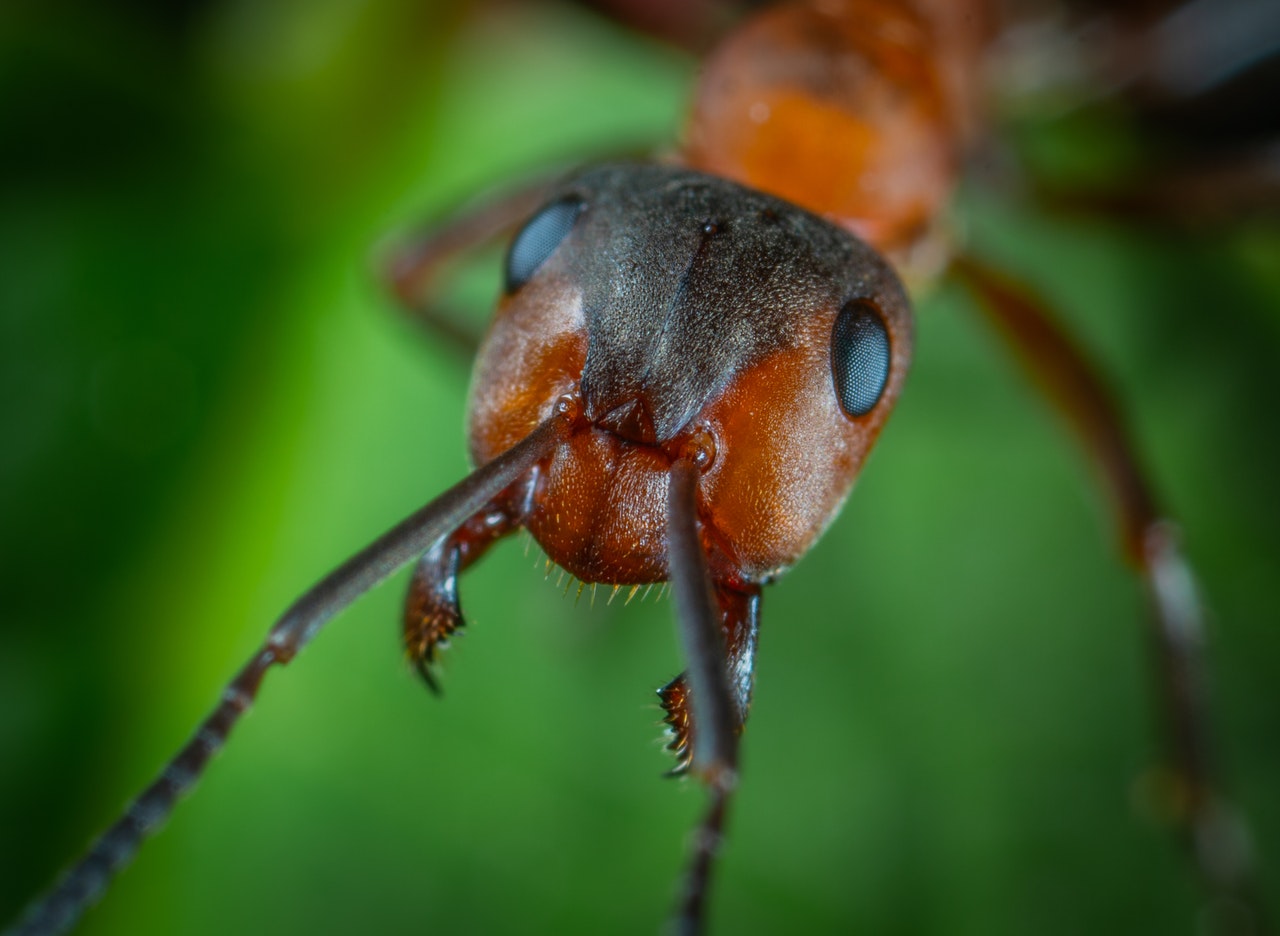
Why do ant bites hurt? Ants both bite and sting. They drip formic acid onto your skin and some ants inject venom.
Not all ants bite. There are estimated to be 22,000 different species of ant and they are on pretty much every landmass except for Antarctica. It is estimated that ants make up between 15 and 25% of all terrestrial animal biomass. They live in colonies, which are called superorganisms because the ants operate as a unified being.
Many ants have the ability to bite, but not all of them bite humans. All ants have mandibles that they use to bite. In a large number of species, these mandibles aren’t big enough or strong enough to bite humans and don’t cause significant pain. There are several species of ant that have a bite or sting we need to worry about. Some of those are fire ants, bullet ants, jack jumper ants, bulldog ants, velvet ants, and sugar ants.
What happens when an ant bites? There are two different processes. The first type of ant doesn’t bite. They drip formic acid onto your skin out of their mouths. Formic acid is very concentrated and it is corrosive. It burns the skin, firing the pain receptors. It will sting and the area will be red for a while, but most people recover pretty quickly. Some people are allergic to formic acid and it can be more dangerous. The majority of ants won’t bite and they will only do it in self-defense. If you leave them alone, they will leave you alone.
The second type of bite is slightly more painful. Some ants, such as fire ants, actually bite the skin with their mandibles and then inject the formic acid under the skin. This causes far more pain and the injury lasts longer. Soldiers of the branded sugar ant species can grow to be 15mm long and they bite with very powerful jaws. A bite can be very painful. They also spray formic acid.
However, ant venom is more worrying than their bites. About 71% of ants are technically venomous, but the majority don’t sting humans. Most of the dangerous ants in the world are renowned because of their venom, not their bite.
Fire ants are famous for stinging, hence their name. They have a stinger in their abdomen and it isn’t barbed so they can sting repeatedly. Many ants sting when they are attacked but fire ants are aggressive. If you are stung by one fire ant, you are likely to be stung by many. They inject oily alkaloids and toxic proteins into the skin. Your body’s immune system fights it, causing a swelling and a pustule that contains the dead white blood cells. They are painful but not usually fatal, unless you have an allergy.
Jack jumper ants are venomous ants found in Australia. They get their name because they can jump about 8cm. They are also aggressive and are attracted to movement. They have excellent eyesight. They are known as the world’s most dangerous ant because they are so aggressive. They are particularly dangerous because their venom causes the human immune system to overreact and 90% of ant allergic reactions in Australia come from jack jumper ants. Bulldog ants come from the same family as the jack jumper ants, but they are larger. They can grow up to 4cm in length. They are also aggressive and if you disturb their nest an army of workers will swarm out to meet you.
Velvet ants are actually wingless wasps. They are called “velvet” because they have hair, like a bee. Their sting is rated as a three on the Schmidt pain index. When they are about to sting, they lower their stinger from their abdomen and it makes an audible squeaking sound. A lot of animals will back away from the “ant” when they hear this sound. It is a very useful defense mechanism. Velvet ants are not aggressive and will only sting in defense.
Bullet ants have the most painful sting of any ant. They are rated a 4 on the Schmidt pain index. People that have been stung say it is like being shot, which is where the name came from. Bullet ants live in enormous colonies on the floor of the rainforests in South America. They are not camouflaged and their only defense is their sting. Like the Velvet ant, they also have a warning squeak when they lower their stinger. The venom consists of poneratoxin which is a neurotoxin that stimulates the pain receptors. One sting is not lethal, but it is extremely painful. These ants are also not aggressive and only sting when they are attacked.
So, ant bites are painful because of the formic acid they drip from their mouths. Some ants inject this formic acid in to the skin. Many ants are also venomous, which causes more pain than their bites. It is rare, but ant bites and stings can cause death. This is pretty much always because of an allergic reaction to the formic acid or their venom. And this is what I learned today.
Sources:
https://www.healthline.com/health/carpenter-ant-bite#do-they-bite
https://en.wikipedia.org/wiki/Fire_ant
https://en.wikipedia.org/wiki/Banded_sugar_ant
https://my.clevelandclinic.org/health/diseases/22943-ant-bites
https://www.everydayhealth.com/bug-bites/ant-bites/
https://www.millerthekiller.com/about/our-blog/ant-bites-everything-there-know-and-beyond
https://my.clevelandclinic.org/health/diseases/22943-ant-bites
https://en.wikipedia.org/wiki/Ant
https://en.wikipedia.org/wiki/Myrmecia_(ant)
https://en.wikipedia.org/wiki/Mutillidae
https://en.wikipedia.org/wiki/Paraponera_clavata

